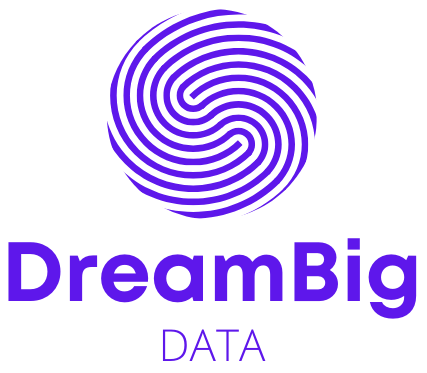Big Data isn’t just for tech giants and massive corporations. Today, small businesses have access to powerful data-driven tools that can improve decision-making, streamline operations, and drive revenue growth. Whether it’s understanding customer behavior, optimizing pricing, or predicting trends, small businesses that harness Big Data gain a serious competitive edge—without needing a massive budget.
Here are 15 game-changing ways your small business can use Big Data to scale smarter and faster.
1️⃣ Understand Customer Behavior & Preferences
Knowing what your customers want before they do is a game-changer. Big Data analytics allows small businesses to track purchase history, website activity, and social media engagement to understand patterns and preferences.
🔥 How to Implement:
✅ Use Google Analytics and Facebook Insights to track customer interactions.
✅ Analyze purchase data to identify top-selling products and services.
✅ Use heatmaps (via tools like Hotjar) to see how customers navigate your website.
📊 Why This Works:
By understanding customer habits, you can personalize marketing, recommend products, and create experiences that increase sales and loyalty.
2️⃣ Optimize Pricing for Maximum Profitability
Big Data helps small businesses set the perfect price point by analyzing market trends, competitor pricing, and customer demand. Dynamic pricing ensures you’re not undercharging or losing sales due to overpricing.
🔥 How to Implement:
✅ Use pricing intelligence tools like Prisync or Wiser to monitor competitor pricing.
✅ Adjust prices based on demand patterns and customer purchase behavior.
✅ Offer personalized discounts for repeat customers using data-driven insights.
📊 Why This Works:
Data-backed pricing strategies increase revenue, boost competitiveness, and prevent lost sales due to poor pricing decisions.
3️⃣ Improve Marketing Campaigns with Predictive Analytics
Why waste money on ads that don’t convert? Big Data lets small businesses predict what will work before spending a dime.
🔥 How to Implement:
✅ Use AI-driven ad platforms like Google Ads and Meta Ads for real-time campaign optimization.
✅ Analyze historical ad performance to determine which strategies generate the best ROI.
✅ Segment your audience using data-driven customer personas for better targeting.
📊 Why This Works:
Data-powered marketing ensures your budget is spent on strategies that deliver results, reducing waste and improving conversions.
4️⃣ Enhance Customer Retention & Loyalty
Acquiring new customers is expensive—Big Data helps keep existing customers happy and engaged, increasing their lifetime value.
🔥 How to Implement:
✅ Use CRM software (like HubSpot or Zoho) to track customer interactions.
✅ Personalize email campaigns based on purchase history and engagement data.
✅ Leverage predictive analytics to identify customers at risk of churning and re-engage them.
📊 Why This Works:
Loyal customers spend more and refer others—data helps you keep them engaged before they lose interest.
5️⃣ Streamline Inventory Management & Reduce Waste
Managing inventory manually leads to overstocking, understocking, and wasted money. Big Data helps predict demand and optimize stock levels, reducing unnecessary costs.
🔥 How to Implement:
✅ Use inventory analytics tools (like TradeGecko or NetSuite) to track sales patterns.
✅ Predict seasonal trends using historical data and adjust stock accordingly.
✅ Automate reordering processes based on real-time inventory insights.
📊 Why This Works:
Accurate inventory management prevents lost sales due to stockouts and reduces costs from excess inventory.
6️⃣ Identify New Revenue Streams & Opportunities
Big Data doesn’t just optimize existing operations—it helps businesses spot untapped opportunities that can lead to new revenue sources.
🔥 How to Implement:
✅ Analyze market trends and emerging consumer behaviors using tools like Google Trends.
✅ Use social listening tools (Hootsuite, Brandwatch) to detect unmet customer needs.
✅ Study competitor data to identify gaps in their offerings and create solutions.
📊 Why This Works:
Leveraging data to find and fill market gaps allows you to introduce profitable new products or services before competitors do.
7️⃣ Improve Customer Support with AI & Chatbots
Customer service is a make-or-break factor for small businesses. AI-powered chatbots and data-driven customer insights can speed up response times, personalize support, and improve customer satisfaction.
🔥 How to Implement:
✅ Use AI chatbots (like Drift or Intercom) to handle FAQs and common inquiries 24/7.
✅ Analyze customer service transcripts to identify recurring issues and improve responses.
✅ Use sentiment analysis tools to gauge customer satisfaction in real-time.
📊 Why This Works:
Data-driven customer support reduces wait times, improves experiences, and keeps customers happy without hiring more staff.
8️⃣ Boost Employee Productivity & Performance
Big Data can track, analyze, and optimize how work gets done, helping businesses increase efficiency and reduce wasted time.
🔥 How to Implement:
✅ Use productivity tracking tools (Trello, Asana, Time Doctor) to analyze workflows.
✅ Implement AI-driven HR analytics to measure performance and training needs.
✅ Track customer service and sales performance to identify high performers and areas for improvement.
📊 Why This Works:
Optimizing productivity with data ensures employees are focused on high-impact tasks, driving business growth.
9️⃣ Strengthen Cybersecurity & Fraud Prevention
Cyber threats are a major concern for small businesses. Big Data allows for real-time fraud detection and proactive security measures.
🔥 How to Implement:
✅ Use AI-driven security software to detect unusual transactions or login patterns.
✅ Regularly analyze network activity data to spot suspicious behavior.
✅ Implement multi-factor authentication and encrypted data storage to prevent breaches.
📊 Why This Works:
A data-driven cybersecurity approach reduces financial losses, protects customer trust, and prevents legal issues from breaches.
🔟 Personalize the Customer Experience
Personalization is no longer optional—customers expect tailored experiences. Big Data enables businesses to deliver hyper-personalized marketing, recommendations, and interactions.
🔥 How to Implement:
✅ Use AI-driven recommendation engines (like Amazon’s) to suggest relevant products/services.
✅ Analyze customer purchase history and browsing behavior to create tailored offers.
✅ Personalize email marketing and website experiences based on user behavior and demographics.
📊 Why This Works:
Personalized customer experiences increase engagement, drive sales, and enhance loyalty, making each interaction feel unique and valuable.
1️⃣1️⃣ Enhance Local Market Insights
For small businesses that rely on local customers, Big Data can provide critical insights on demographics, foot traffic, and purchasing behavior within specific geographic areas.
🔥 How to Implement:
✅ Use Google My Business and location analytics to track customer interactions.
✅ Leverage geospatial data from tools like Foursquare, Placer.ai, or Yelp Insights to understand local traffic patterns.
✅ Monitor local competitors’ promotions and pricing strategies to stay competitive.
📊 Why This Works:
With data-driven insights, businesses can optimize location-based marketing, target ideal customer demographics, and adjust inventory to meet local demand.
1️⃣2️⃣ Reduce Costs with Smart Expense Management
Data analytics helps small businesses identify hidden expenses, cut unnecessary costs, and improve operational efficiency without sacrificing quality.
🔥 How to Implement:
✅ Use accounting and expense-tracking software like QuickBooks, Expensify, or Xero to monitor spending.
✅ Analyze vendor pricing and supply chain costs to find cheaper, more efficient alternatives.
✅ Track and optimize energy usage, employee productivity, and resource allocation to eliminate waste.
📊 Why This Works:
With real-time financial data, businesses gain full visibility into where money is being wasted, helping to cut costs strategically without hurting growth.
1️⃣3️⃣ Predict Business Trends & Demand
Big Data enables small businesses to forecast future trends, helping them prepare for shifts in customer behavior and industry changes before they happen.
🔥 How to Implement:
✅ Use Google Trends and AI-driven forecasting tools to analyze market demand.
✅ Track historical sales data to predict peak seasons and plan accordingly.
✅ Monitor industry reports and competitor movements to stay ahead of upcoming trends.
📊 Why This Works:
Predictive analytics ensures your business is always ahead of market changes, allowing for better inventory planning, staffing decisions, and marketing strategies.
1️⃣4️⃣ Optimize Website & E-Commerce Performance
For businesses selling online, Big Data provides critical insights into website traffic, customer journeys, and conversion rates, helping to boost online sales and engagement.
🔥 How to Implement:
✅ Use Google Analytics and heatmaps to see how visitors navigate your site.
✅ A/B test different landing pages, CTAs, and checkout processes to maximize conversions.
✅ Analyze abandoned cart data and implement retargeting strategies to recover lost sales.
📊 Why This Works:
Data-backed website optimization ensures your site is user-friendly, responsive, and fine-tuned for sales success.
1️⃣5️⃣ Strengthen Supplier & Vendor Relationships
Small businesses depend on suppliers, but not all vendors are cost-efficient, reliable, or strategic partners. Big Data helps businesses analyze supplier performance, negotiate better contracts, and improve supply chain resilience.
🔥 How to Implement:
✅ Use vendor management tools to track supplier pricing, delivery speed, and product quality.
✅ Analyze historical ordering data to negotiate bulk discounts and optimize purchasing schedules.
✅ Identify supply chain risks early by tracking market disruptions and pricing fluctuations.
📊 Why This Works:
Smarter supplier management helps businesses save money, prevent stockouts, and maintain smooth operations—even during supply chain disruptions.
Big Data is no longer a luxury reserved for corporate giants—small businesses can now use data-driven strategies to streamline operations, increase profits, and make smarter decisions.
🔑 Key Takeaways:
✅ Start Small – Use free and low-cost analytics tools before scaling up.
✅ Automate Where Possible – AI-powered insights save time and maximize efficiency.
✅ Leverage Customer Data – Personalized marketing and experience boost loyalty and sales.
✅ Continuously Improve – Data is only useful if you act on it—test, optimize, and refine.
By implementing these 15 powerful Big Data strategies, your small business can compete smarter, grow faster, and stay ahead of the competition—without a massive budget. The future belongs to those who use data wisely. 🚀📊



